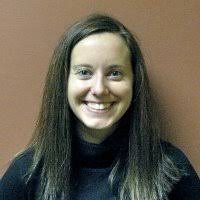Day 1 :
Keynote Forum
Sarah S Nierman
Community Health Network, USA
Keynote: Pediatric ceftriaxone dose rounding protocol
Time : 09:30-10:10

Biography:
Abstract:
Keynote Forum
George Giacoia
National Institute of Child Health and Human Development/Food and Drug Administration, USA
Keynote: Pediatric clinical pharmacology: Looking back and to the future
Time : 11:05-11:45

Biography:
Abstract:
Keynote Forum
Regina Folster-Holst
Past President of European Society for Pediatric Dermatology, Germany
Keynote: Atopic dermatitis: Management in early childhood
Time : 11:45-12:25

Biography:
Abstract:
Keynote Forum
Majed Sarayreh
Queen Rania Al-Abdallah Hospital for Children, Jordan
Keynote: Glenn-Anderson ureteral advancement Ureteroneocystostomy compared to Cohen cross-trigonal ureteral reimplantation in children at two separate institutes
Time : 12:25-13:05

Biography:
Abstract:
- Pediatric Neurology: Disorders and Treatments | Pediatrics and Adolescent Medicine
Location: FREDERICK

Chair
George Giacoia
National Institute of Child Health and Human Development/Food and Drug Administration, USA
Session Introduction
Jamel Hajji
Gafsa University, Tunisia
Title: The effect of experience, coaching and technical post, on the coping strategies solicited by the U15 elites affi liated to the regional centers of the Tunisian Football Federation (TFF)
Time : 14:00-14:30

Biography:
Abstract:
Hiba A Awooda
Dar Al-Uloom University, Saudi Arabia
Title: Potential neuroprotective effect of N-Nitro-L-Arginine-Methylester in cerebral injury induced by transient ischemia/reperfusion in rats
Time : 15:00-15:30

Biography:
Abstract:
Ashraf Mohammadzadeh
Mashhad University of Medical Sciences, Iran
Title: The therapeutic effect of Zinc sulfate in term Neonatal hyperbilirubinemia
Time : 15:00-15:30

Biography:
Abstract:
Mohammed Alrowaily
King Abdulaziz Medical City, Saudi Arabia
Title: Gray zone of infant viability from central Saudi Arabia
Time : 15:50-16:20

Biography:
Abstract:
John Malcolm
Bay of Plenty District Health Board, New Zealand
Title: Probiotic BlisK12 lowers group A Streptococcal GAS pharyngeal prevalence in a high Acute Rheumatic Fever (ARF) area by lowering school transmission; a stepped wedge cohort study
Time : 16:20-16:50

Biography:
Abstract:
Regina Folster-Holst
Past President of European Society for Pediatric Dermatology, Germany
Title: Paraviral exanthems in childhood
Time : 16:50-17:20

Biography:
Abstract:
Treeah Majors
University of Pennsylvania School of Nursing, USA
Title: Intranasal Oxytocin as behavioural pharmacotherapy in autism spectrum disorder
Time : 17:20-17:50

Biography:
Abstract:
Ioanna Konstantopoulou
Athens Medical Center, Greece
Title: Breastfeeding and medication
Time : 17:50-18:20

